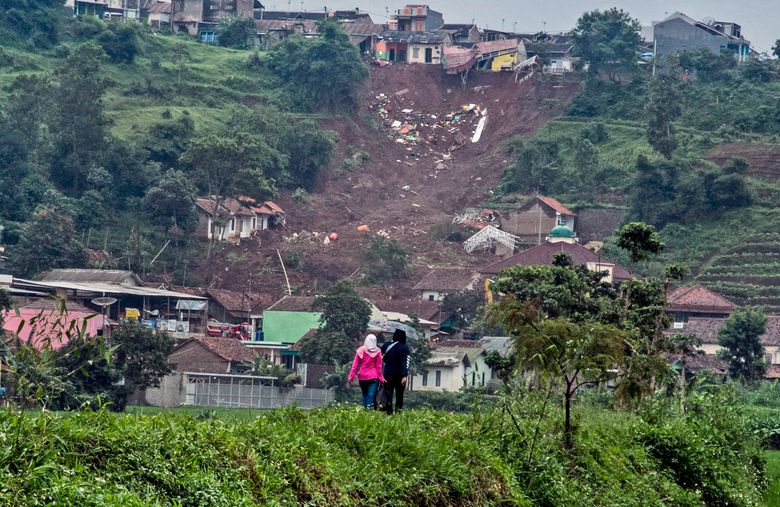Mass Wasting (Landslides)
Landslides are frequent in Indonesia, between 1990 and 2007 alone 1,215 landslides occurred in the country. Recently rainfall and earthquakes paired with environmentally harmful land use are attributed to an increase of landslides in the last decade. About 108.9 million people live in susceptible zones, about 194 million are exposed to the risk of landslides. According to a landslide hazard map released by Indonesia's National Disaster Management Agency (BNPB) the following regions are the most at risk:
- Western Sumatera Island
- Bukit Barinas mountain belt
- Southern and central Java Island
- Bali
- Nusa Tenggara
- Sulawesi Island
- Maluku
- West Papua New Guinea
Areas most prone to landslides are fertile lands with groundwater. People build settlements there, such as farms and infrastructure putting them at risk. Other risk factors include population density, infrastructure quality, economic status, and regional capacity.
Mitigation:
Landslide mitigations in Indonesia include modification of slope geometry, slope reinforcement and retention, drainage management, and relocation. Other measures include community awareness and preparedness and improving area management (structures, processes, and resources). Using vegetation has been adopted by the Indonesian government to reduce hazards and helps with environmental restoration efforts. In 2020 the President of Indonesia had vetiver grass planted in western Java as a method of landslide prevention.
Sources:


Seem that most, if not all, the countries have some type of landslides. You did a great job covering mass wasting for Indonesia; it was very informative. It was really creative for the President of Indonesia to have vetiver grass planted to prevent landslides.
ReplyDelete